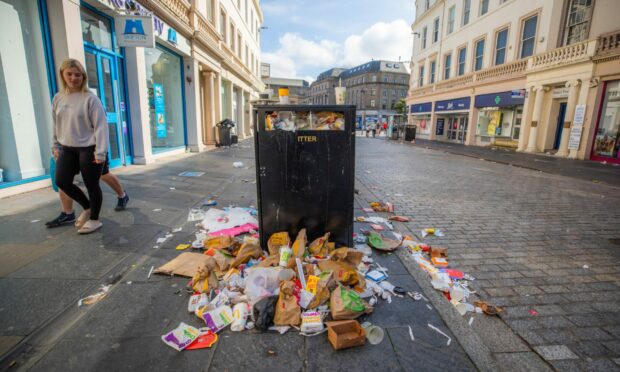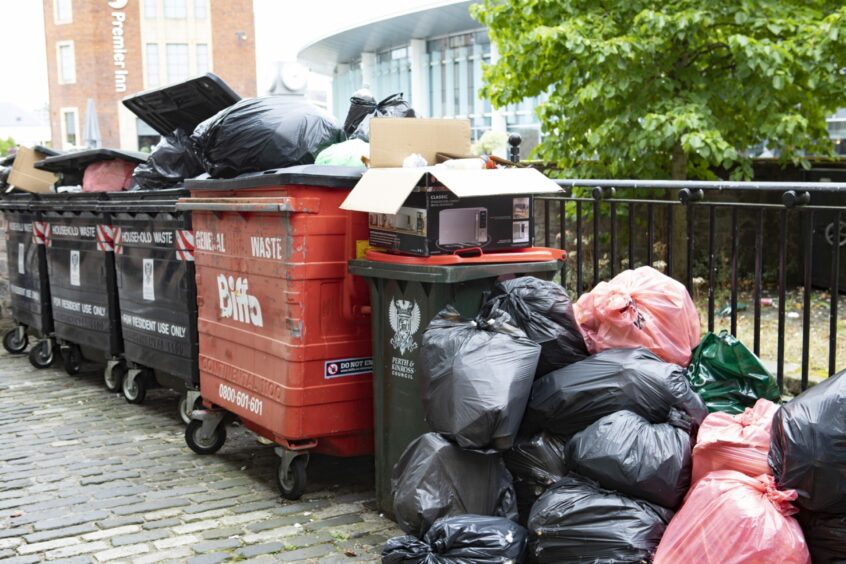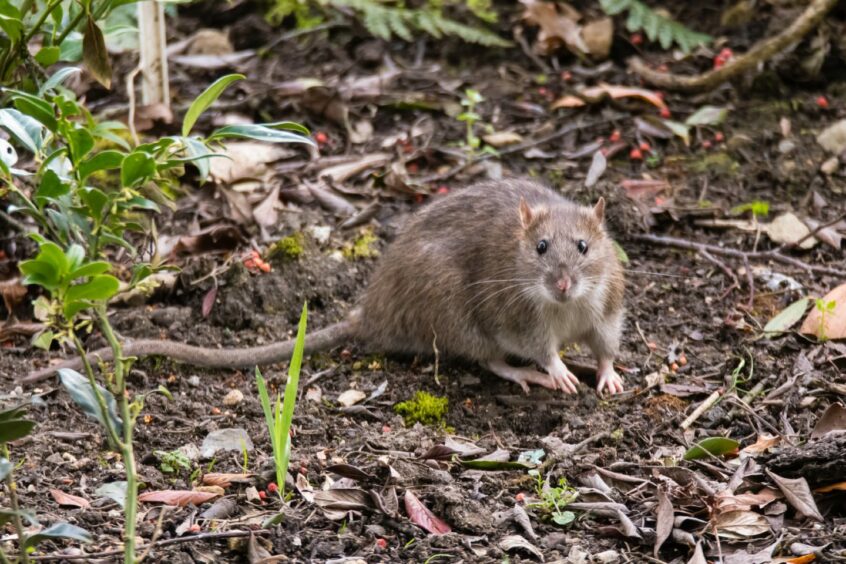It’s only a matter of time before overflowing bins lead to a spike in the numbers of rats in our town and city centres.
That’s according to experts at Perthshire-based Andy Law Pest Control who work across the east of Scotland.
Manager Vanessa Hartley is the company manager.
She says the heaps of rubbish that have piled up in Dundee, Perth and in larger towns will provide food and shelter for rat populations, presenting a substantial public health hazard.
And there is very little the public – already bracing themselves for a second set of strikes in September – can do to protect themselves against the vermin.
“We ourselves have noticed great increases in rat populations anyway,” she explains.
“There are some side alleyways in Perth where you can walk down them and there are rat droppings scattered over the pavements in broad daylight.
“They are almost uncontrollable in the wider environment.”
She said numbers were already high due to a succession of milder winters.
“We haven’t had the natural attrition rate on the population that a really harsh winter will bring you.”
“There are too many areas for them to thrive where people don’t do anything about it.”
Rubbish heaps luring rats out from hidden corners
City centres already provide rats with a large number of out of the way habitats where they can thrive.
They include sewers, railway embankments, shop basements and many others,
Many will have noticed the number of takeaway boxes and other food cartons heaped in and over unemptied bins in town and city centres.
Vanessa suggested the food will draw the rats out of their hiding places.
“The rats will want food. And that has a huge impact on their breeding capabilities. Rubbish piled up in the way it is will actively draw all those rats into public areas.
“And once rats find a source of food they will keep coming back to it.”
Rats will even eat the discarded boxes to get sustenance from food scraps and grease, she adds.
“They are not very picky when it comes to a source of nutrition.”
Anything that gives rats a place to live or hide is called ‘harborage’.
Sometimes a shop can get rats because it has a pile of rubbish in the backyard.
“You will get rats living in these piles of readymade shelter and breeding in there.”
Why are rats in city centres a problem?
It may sound obvious, but rats pose a significant health hazard.
Although they have their fans, the vermin disgust most people on sight.
But it is not just their looks that pose a problem, but their tendency to spread disease.
Vanessa highlights the risk of Leptospirosis.
The disease can cause fever symptoms although the NHS says is rare in the UK
“That’s in their urine. That’s survives in damp areas. And of course, all this rubbish is piled up outside. It’s not in a nice, dry storeroom.
“You’re going to get rats, quite freely, running around in daylight, scavenging off the food sources they’ve found, spreading their diseases and their urine in public areas.“
So what can people do to protect themselves?
Sadly, not a lot.
Vanessa says people should look to store their waste in a metal container, if possible, during periods of industrial action.
She said rats can chew through plastic containers.
“The first line of defence is environmental management. And that is denying the vermin point of entry, food, or living areas.
“Leaving piles of rubbish around bins means your first line of control is already gone.”
She said if rats spread to a private property then people should call an expert, rather than tackle the problem themselves.
“People spend a fortune on the internet and they most often do not know what they’re doing.”













Conversation